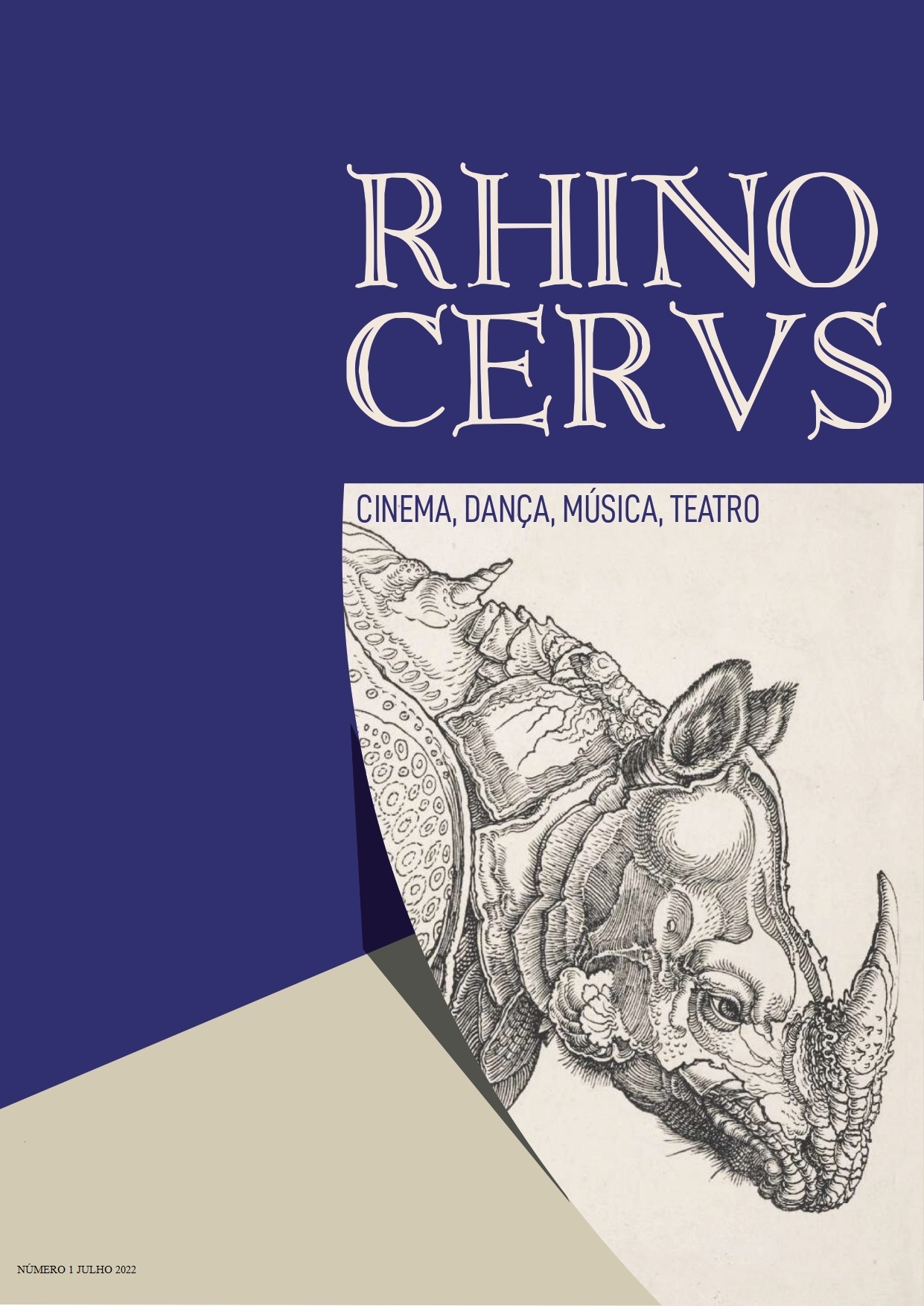Towards a new cinefilia: the film-museum as a cartography of the real
DOI:
https://doi.org/10.34629/rcdmt.vol.1.n.1.pp121-143Keywords:
Museum films, Temporality, Spatiality, Cartography of the real, Assembly knowledge, No Quarto da VandaAbstract
In this text, dimensions of production of what we call museum films will be approached, justifying the need for their existence for the benefit and enjoyment of a new type of spectator. In the age of telematic omnipresence, the disregard of temporality and spatiality provokes a reversal of interiority, a loss of the experience of deepening the films on the part of their viewers. Film-museums generate effects of monumentality, manage to transform a time interval into an event, convoke the spectator, empowering him as a co-producer of meaning, making him active. This is how a cinema of cartography of the real makes it possible for the spectator to disassemble and reassemble it, on the way to a new cinephilia. As an illustration of this broader phenomenon, the film No Quarto da Vanda, by Pedro Costa, will be convened.
Downloads
References
Amiel, Vincent. 2007. Estética da Montagem. Lisboa: Edições Texto & Grafia.
Augé, Marc. 2005. Não-Lugares: Introdução a uma Antropologia da Sobremodernidade. Lisboa: 90 Graus.
Bataille, Georges. 2015. O Nascimento da Arte. Lisboa: Sistema Solar.
Baudrillard, Jean. 1991. Simulacros e Simulação. Lisboa: Relógio d’Água.
Bazin, André. 1992. O Que É o Cinema. Lisboa: Livros Horizonte.
Benvenuto, Sergio. 2020. “Benvenuto in Clausura”. In Antinomie: Scritture e Imaginni, 05-03-2020. Acedido Mar. 2, 2022. https://antinomie.it/index.php/2020/03/05/benvenuto-in-clausura/.
Blanchot, Maurice. 1987. O Espaço Literário. Rio de Janeiro: Editora Rocco.
Bresson, Robert. 2000. Notas Sobre o Cinematógrafo. Porto: Porto Editora.
Crary, Jonathan. 2013. 24/7: Late Capitalism and the Ends of Sleep. London: Verso.
Didi-Huberman, Georges. 2017. Diante do Tempo: História da Arte e Anacronismo das Imagens. Lisboa: Orfeu Negro.
Florêncio, Pedro. 2019. Esculpindo o Espaço. O Cinema de Frederick Wiseman. V. N. Famalicão: Edições Húmus.
Grilo, João Mário. 2006. O Homem Imaginado. Lisboa: Livros Horizonte.
Grilo, João Mário. 2007. As Lições do Cinema: Manual de Filmologia. Lisboa: Edições Colibri.
Guerreiro, António. 2018. O Demónio das Imagens: Sobre Aby Warburg. S.l.: Língua Morta.
Guimarães, Regina, e Saguenail, orgs. 2007. Ler Cinema: o Nosso Caso. Lisboa: Câmara Municipal de Lisboa. Direcção Municipal de Cultura. Videoteca Municipal.
Jorge, Nuno Barradas. 2020. Re-Focus: The Films of Pedro Costa – Producing and Consuming Contemporary Art Cinema. UK: Edinburgh University Press.
Kracauer, Siegfried. 2012. “A experiência e a sua matéria”. In Naturalismos. De Lucrécio a Lobo Antunes, org. de Kelly Benoudis Basílio e Felipe Cammaert, 455-475. V. N. Famalicão: Edições Húmus.
Lévinas, Emmanuel. 2015. Deus, a Morte e o Tempo. Lisboa: Edições 70.
Lipovetsky, Gilles, e Jean Serroy. 2010. O Ecrã Global. Lisboa: Edições 70.
Mitchener, Jacob. 2020. “Video Games vs Everything: Netflix, Instagram, and Youtube – Anything that Demands your Attention – Are Competitors Too”. Superjump, 03-12-2020. Acedido em Mar. 2, 2022. https://superjumpmagazine.com/video-games-arent-only-competing-against-other-video-games-dd1053eec2e4.
Munt, Alex. 2018. “Alexander Sokurov’s Francofonia: Museum Studies”. Senses of cinema, Issue 86 Cinema and the Museum. Acedido em Mar. 2, 2022. https://www.sensesofcinema.com/2018/cinema-and-the-museum/alexander-sokurov-francofonia/#fn-34146-14.
Natálio, Carlos; João Araújo; Luís Mendonça; Ricardo Vieira Lisboa. 2020. “Let’s Get Physical: Contra o Fim dos Suportes Físicos, a Favor da Liberdade do Espectador”. À Pala de Walsh, 19-11-2020. Disponível em: https://www.apaladewalsh.com/2020/11/lets-get-physical-contra-o-fim-dos-suportes-fisicos-a-favor-da-liberdade-do-espectador/.
Rancière, Jacques. 2012. Os Intervalos do Cinema. Lisboa: Orfeu Negro.
Sontag, Susan. 1996. “The Decay of Cinema”. The New York Times Magazin, 25-02-1996. Acedido Mar. 2, 2022. https://www.nytimes.com/1996/02/25/magazine/the-decay-of-cinema.html.
Virilio, Paul. 1993. A Inércia Polar. Lisboa: Dom Quixote.
Downloads
Published
Issue
Section
License
Copyright (c) 2022 RHINOCERVS: Cinema, Dança, Música, Teatro

This work is licensed under a Creative Commons Attribution-NonCommercial 4.0 International License.
Articles published or submitted to RHINOCERVS: Cinema, Dança, Música, Teatro are licensed according to Creative Commons Attribution License (CC BY-NC 4.0). Authors agree that:
Copyrights of all articles published are retained by authors with first publication copyright granted to the journal.
All articles are under the Creative Commons Attribution License recognizing the authorship of the publication and identifying that first publication took place in this journal.
Authors have the right to free distribute or make available in private or institutional pages the version published by RHINOCERVS: Cinema, Dança, Música, Teatro provided the original proper citation.
The journal only accepts articles not published previously (except in the form of an abstract or as part of academic thesis), that it is not under consideration for publication elsewhere. After published, the article cannot be published again partial or totally without the editorial board consent.





